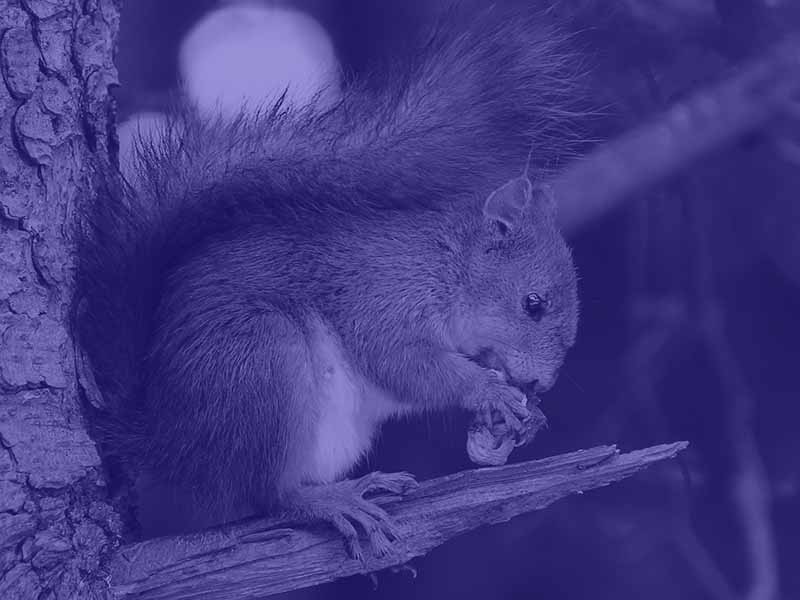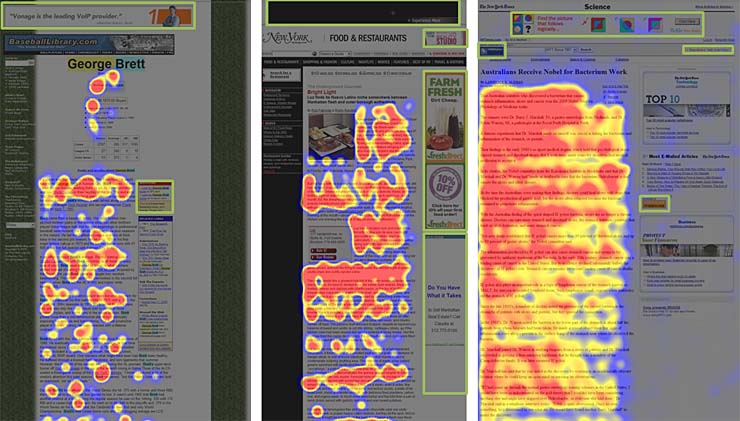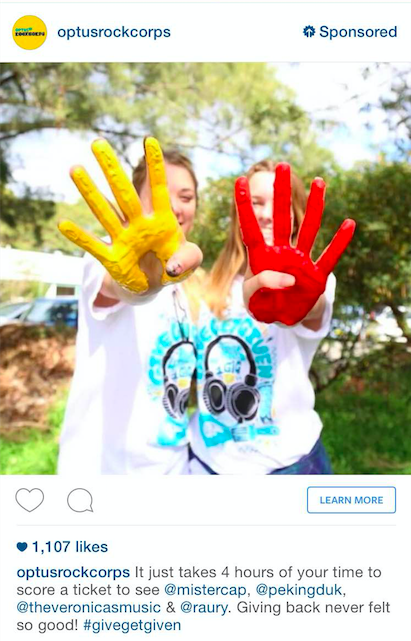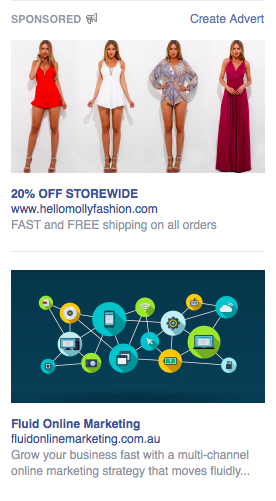This new generation of ads puts the consumer back in the centre of the advertising plan: messages are more targeted, of better quality and better integrated within the media. The user becomes the priority… at last!
The need for new types of online ads
With the ever-changing face of marketing and consumer behaviour, it is important to keep up with how marketers can attract the fickle user. Users used to be in front of the television for a couple of hours each day, but today, things have changed. Potential consumers spend less time in front of their TV, and more time online – whether it be on a computer or mobile.
So nowadays, it makes sense for advertisers to refocus their effort on where the consumers spend their time: on the Internet.
Although, one problem has been raised: how can we capture the user’s attention without being too intrusive? More traditional banner ads fail to attract the user, as seen on the following heatmap:
(Source)
This is how native advertising was born: managing to get their attention while being well-integrated into the format and content of the website.
What are native ads?
First and foremost, yes, native ads are another form of paid ads. I’d like to call them “improved PPC ads”, and you’ll soon understand why.
The main objective for these ads is to add up to the web page in terms of information and content. It improves the user experience by being informative and/or entertaining. This is why it is essential to create them in line with the interests and expectations of the user. This is why the term “native” is being used.
Of course, those ads need to be clearly mentioned as “sponsored”.
What do native ads look like?
If you followed what I’ve said so far, you will know that their look will vary depending on which platform you see these ads on. In the examples above, these ads come from Instagram and Facebook.
Native ads can take the form of a video, image, infographic or even a written article.
They are most likely to be found on social media more than websites.
What are the advantages of using native ads?
If created well, native ads will not only raise be interesting and informative, but raise brand awareness (check out this great article on how to build your brand awareness while you’re at it!) and sell more products.
- Become more visible online
Making your advertising more visible without bothering users is one fine advantage. Those native ads bring a certain visibility right in the heart of the editorial, and increases the impact of the advertisement, which is getting harder and harder to do because of the multiple types of traditional display advertising.
- Broadcast more
The main point is to reach out to people using better content, where the space of expression is bigger and better adapted than traditional formats.
- Engage better and for a longer period of time
The editorial support lets the user engage more: he is reassured as the native ad is not too abrupt. The essence of native advertising is to be as targeted as possible, giving the user a sense of quality and rich content (as long as it relates to the topic of the web page or interests of the user).
The future of native ads
The rise of internet consumption on mobiles and the diversification of social media platforms has helped a lot in shaping native advertising. BIA/Kelsey forecasts that revenue from it will more than triple by 2017, reaching US $4.57 billion per year.
If you are not yet using this ad format, I recommend that you do, and as soon as possible.
You can also reach out to one of us at Reef to see how we can help you implement native ads.



